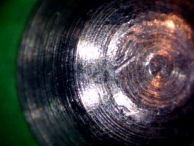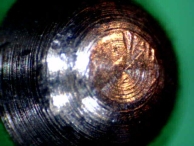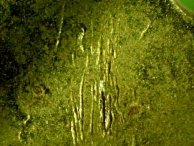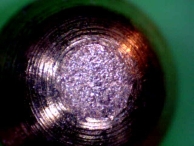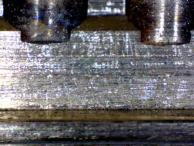Pick Guns
Pick guns are a covert entry tool used to pick pin-tumbler based locks. Pick guns have manual and electric variants, each with their own type of forensic evidence. Both work to rapidly separate pin pairs at the shear-line to allow the plug to rotate.
Pick guns are similar in function to bump keys.
Pick Gun Principles
Manual pick guns are spring-loaded tools that resemble a toy gun with a lockpick attached to the front. The lockpick is interchangeable, and referred to as the "needle." To open the lock, the needle is inserted in the lock and placed under all pin stacks. As with lockpicking, a separate tension tool is used to apply tension and rotate the plug. Light tension is applied to the tension tool and the trigger of the pick gun is fired. According to physics, the kinetic energy transfers from bottom pin to top pin, causing the top pins to "jump" in their chambers. If all top pins jump above the shear-line at the same time, the plug can be rotated to unlock the lock.
Electric and vibrational pick guns work on a similar principle, but instead oscillate the needle back and forth, causing it to vibrate. The tool is controlled to get the resonating frequency of the needle at the right point so that top pins jump above the shear-line.
The main source of forensic evidence with pick guns is on the bottom of the pins, where the needle strikes. We may also see marks in the plug if the needle is not properly positioned and makes contact with the plug walls when triggered. The cam on the back of the lock may also have marks if the needle is inserted too far into the lock. As is the case with lockpicking, we can also identify tool marks left by the tension tool.
In the case of vibrational or electric pick guns, we will see considerably more evidence on the plug walls because the device is constantly moving.
coming soon: Effects of Wear
If you would like to help this site by donating any pick guns, vibrational picks, or electronic picking tools, please contact me.


